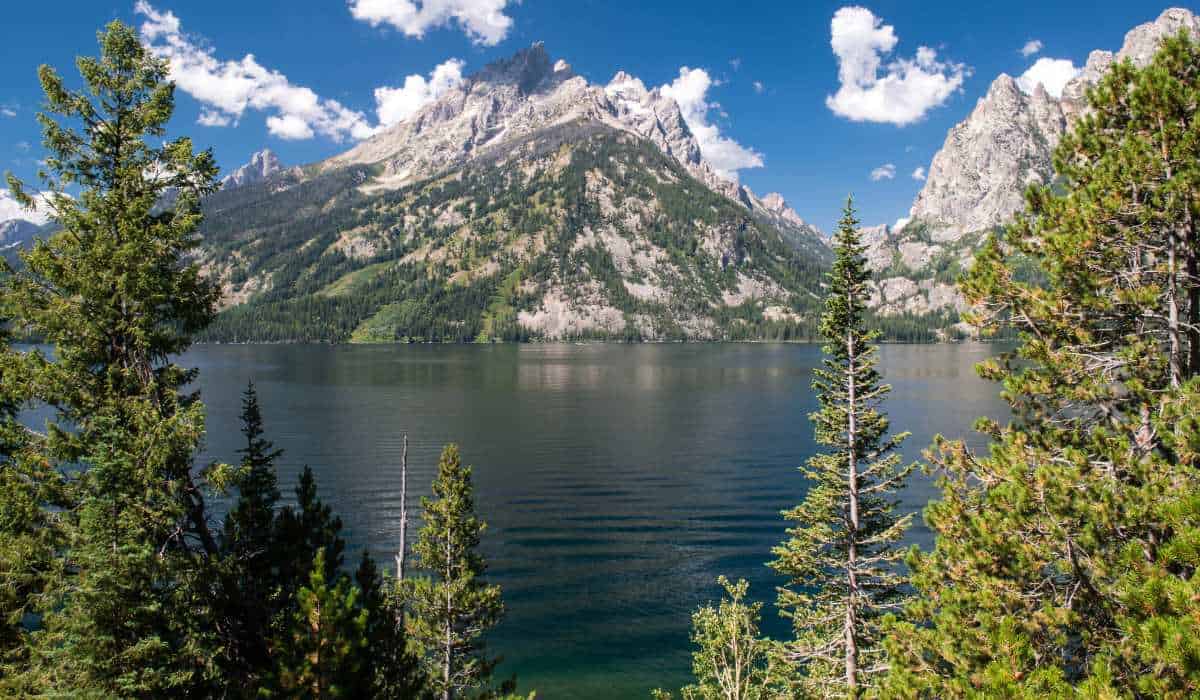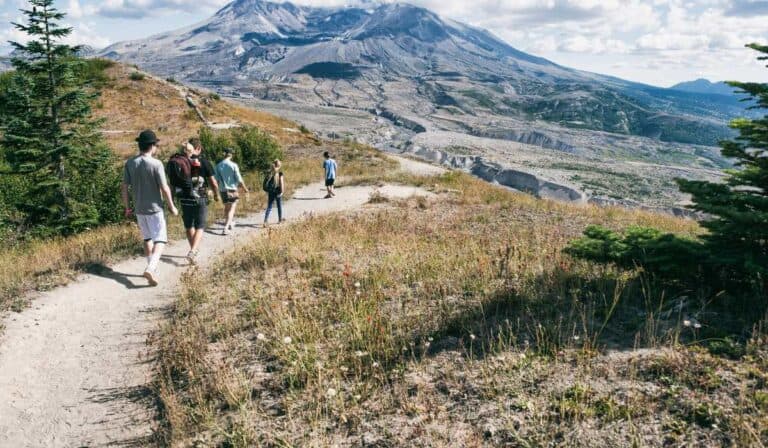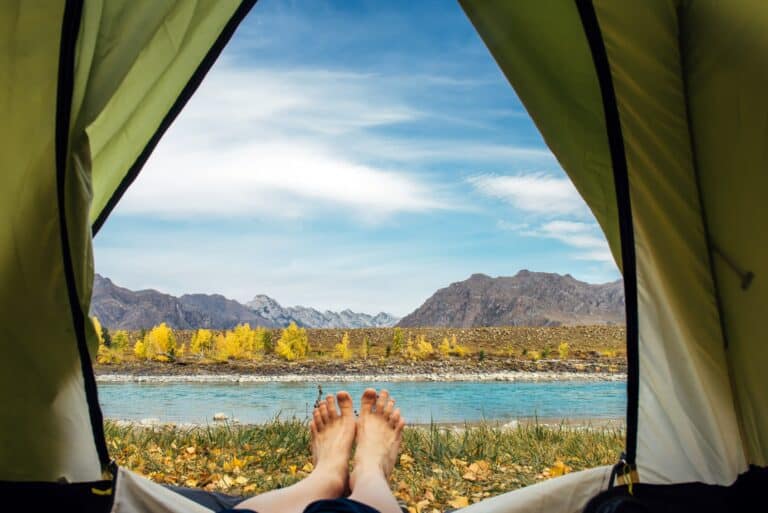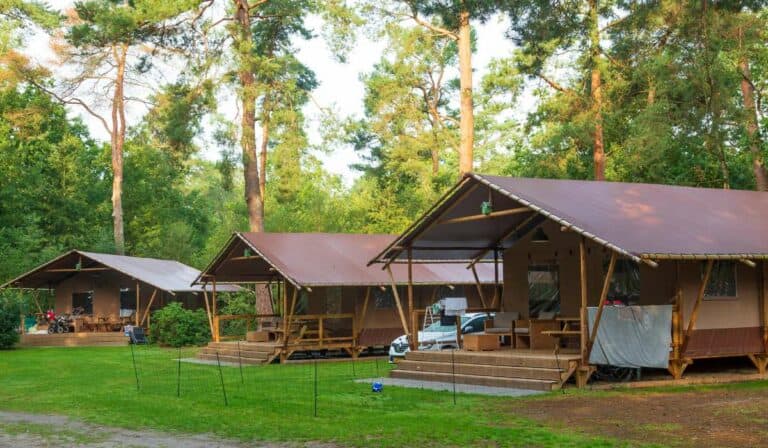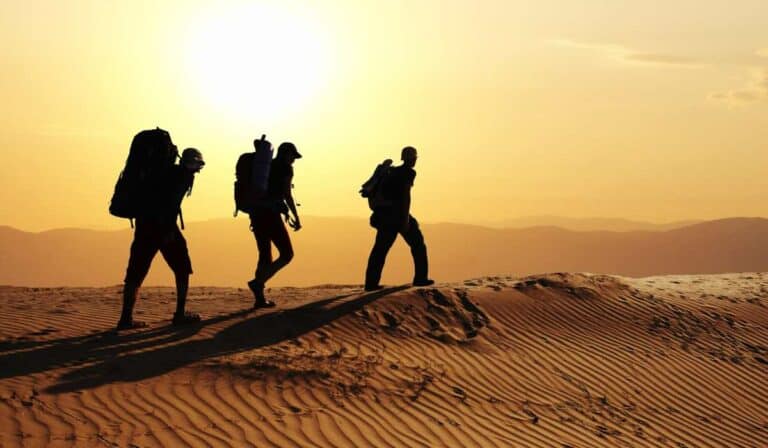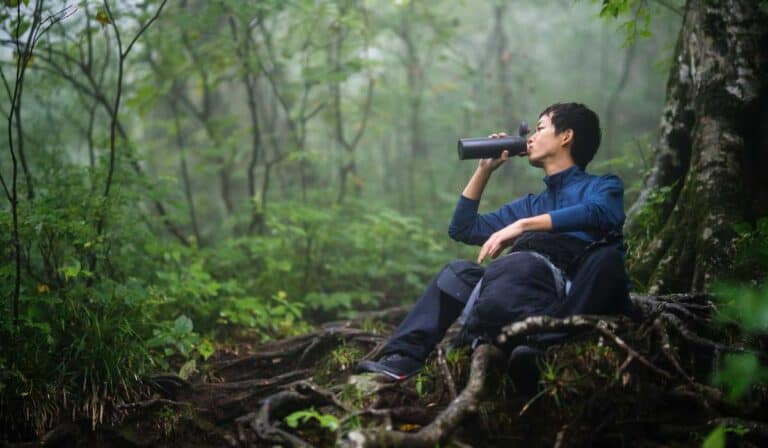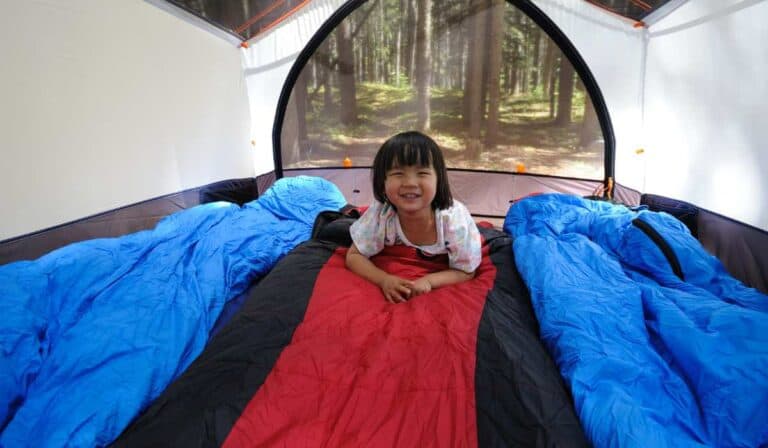Best Easy Day Hikes Grand Teton National Park
Discover the best easy day hikes Grand Teton has to offer, allowing you to experience the breathtaking beauty of this national park without needing advanced hiking skills. From serene lakeshores to lush pine forests and majestic mountain views, these trails provide a taste of everything that makes Grand Teton an unforgettable destination.
To ensure a safe and enjoyable adventure, we’ll provide tips and tricks for hiking in Grand Teton National Park. We’ll also discuss wildlife viewing opportunities, camping options within the park, fishing spots, and other outdoor activities that complement your exploration of the best easy day hikes in Grand Teton.
Table of Contents
1. Exploring Grand Teton National Park: An Overview

Welcome to the majestic Grand Teton National Park, home to the stunning Teton Range, serene alpine lakes, and a plethora of outdoor activities for adventurers of all skill levels. In this overview, we’ll provide details of the park’s attractions and share some great easy day hikes to enjoy during your stay.
A Brief Introduction to Grand Teton National Park
Located in northwestern Wyoming near Jackson Hole, Grand Teton National Park spans over 310,000 acres and boasts jaw-dropping mountain vistas that will leave you breathless. The park is named after its highest peak – Grand Teton – which towers at 13,770 feet above sea level. Explore the park’s extensive path network, boasting a variety of routes from brief promenades to strenuous backcountry hikes – something for everyone.
The Best Time to Visit
- Summer: June through September offers warm weather perfect for hiking or water sports on Jackson Lake.
- Fall: Late September through October brings cooler temperatures and vibrant fall foliage – ideal for photographers.
- Winter: November through April sees snow-covered peaks perfect for skiing or snowshoeing adventures (note that many facilities are closed during winter).
- Spring: May is a great time to witness wildflowers blooming throughout the park but be prepared for unpredictable weather conditions.
Easiest Hikes in Grand Teton National Park
For those wanting to take in the sights of Grand Teton without overexerting themselves, there are a number of trails available for easy hikes. Some popular easy hikes include:
- Taggart Lake Trail
- Moose Ponds Trail
- Lakeshore Trail at Colter Bay Visitor Center
- Jenny Lake Loop and Hidden Falls Hike (accessible via boat shuttle)
These trails offer stunning views of the Teton Range, serene lakeshores, and opportunities for wildlife spotting – all with minimal elevation gain.
Visitor Centers and Facilities
For a great experience, be sure to check out one of the park’s visitor centers for helpful information on trails, maps, and tours. Popular visitor centers include:
- Craig Thomas Discovery & Visitor Center
- Colter Bay Visitor Center
- Laurance S. Rockefeller Preserve Center
- Jenny Lake Ranger Station & Visitor Center
Having an overview of Grand Teton National Park, let us now explore the strategies for a successful hike in the park.
Investigating Grand Teton National Park is an excellent opportunity to savor the grandeur of nature. To guarantee a pleasant trek, make sure to adequately prepare beforehand. For those planning to hike in Grand Teton, here are some ideas and strategies to ensure a successful experience.
The Key Takeaway:
Grand Teton National Park offers an extensive network of trekking routes, from easy to strenuous, totaling over 200 miles. The park offers stunning views of the Teton Range and serene lakeshores for wildlife spotting opportunities. Visitors can stop by one of the visitor centers for information on trail conditions, maps, guided tours, and more to make their visit enjoyable.
Click here to read about Best Youth Hiking Backpacks Reviewed
2. Hiking in Grand Teton: Tips and Tricks
Before embarking on your adventure to explore the majestic Grand Teton National Park, it’s essential to be well-prepared for a fun, safe, and memorable experience. To ensure a successful and enjoyable experience, here are some useful suggestions to help you prepare for your journey.
Choose the Right Trail for Your Skill Level
With a variety of trails ranging from easy hikes to challenging treks, there’s something for everyone at Grand Teton National Park. When picking a path, think about elements like length, altitude increase, and roughness level. Some popular easy day hikes include:
- Taggart Lake Trail
- Moose Ponds Loop Trail
- Phelps Lake Overlook via Death Canyon Trailhead
- String Lake Loop Trail
- Jenny Lake – Hidden Falls – Inspiration Point Loop (via boat shuttle): This popular hike starts with a scenic boat ride across Jenny Lake before leading you through pine forests up to Hidden Falls waterfall and then onto Inspiration Point with panoramic views of the park.
Wear the Right Gear
Proper footwear is crucial for a comfortable and safe hiking experience. Invest in a good pair of hiking boots or shoes with adequate support, traction, and protection from rocks and other trail hazards. Dressing in layers will help you adapt to changing weather conditions throughout your hike.
Pack Essentials
Carry essential items such as water, snacks, sunscreen, insect repellent, a map of the park’s trails (available at visitor centers), and basic first aid supplies during your hike. A lightweight daypack can be helpful for carrying these items comfortably.
Be Prepared for Changing Weather Conditions
The weather in Grand Teton National Park can change rapidly due to its high elevation and mountainous terrain; sudden rainstorms or temperature drops are not uncommon even during summer months. Always check the weather forecast before heading out on your hike and plan accordingly.
Follow Leave No Trace Principles
To preserve the beauty of Grand Teton National Park for future generations, it’s important to practice Leave No Trace principles. This includes packing out all trash (including food waste), staying on designated trails to avoid damaging vegetation or causing erosion, and respecting wildlife by observing from a distance without feeding them or approaching too closely.
Safety First
Last but not least – always prioritize safety while hiking in Grand Teton National Park. Be aware of potential hazards such as steep cliffs, loose rocks, and slippery surfaces. Keep watch for potential animal encounters; bear in mind to remain a safe distance away from creatures like bears and moose.
With these precautions in mind, you can ensure a safe and enjoyable journey through the breathtaking beauty of Grand Teton National Park.
Hiking Grand Teton can be a rewarding journey if you plan and equip yourself properly. With that said, let’s explore some of the best easy day hikes available in this beautiful national park.
The Key Takeaway:
Be prepared for an enjoyable, secure, and remarkable trek in Grand Teton National Park by heeding these hints. Choose the right trail based on your skill level, wear proper gear including good hiking boots or shoes with adequate support, and pack essentials such as water, snacks, and sunscreen while being prepared for changing weather conditions. Always prioritize safety first while practicing Leave No Trace principles to preserve the beauty of the park for future generations.
3. Best Easy Day Hikes in Grand Teton

Grand Teton National Park provides a variety of simple treks that enable tourists to appreciate the spectacular vistas of the majestic Teton Range and its encompassing scenery. These trails are perfect for those who want to experience the park without committing to long or challenging hikes. Here, we have compiled a list of some of the best easy day hikes in Grand Teton that you should consider adding to your itinerary.
Taggart Lake Trail
A popular trail in Grand Teton National Park, the Taggart Lake Trail is a 3-mile round trip that takes hikers through forests and meadows before reaching the lake beneath the majestic peaks of the Tetons. Beginning at the Taggart Lake Trailhead, this trek of 3 miles in total gives you a chance to take in majestic peaks and meadows with tall pines all around as you make your way to the lake.
Moose Ponds Loop Trail
If wildlife viewing is high on your priority list while visiting Grand Teton National Park, then Moose Ponds Loop Trail is an excellent choice for an easy hike. This 2.7-mile loop trail begins near Jenny Lake Visitor Center and winds along Cottonwood Creek before looping around two ponds where moose sightings are common.
Jenny Lake & Hidden Falls Trails (via Boat)
A great way to combine hiking with a scenic boat ride across Jenny Lake is by taking advantage of the Jenny Lake Boating shuttle service. Once across, embark on a short but rewarding 1-mile round trip hike up Cascade Canyon towards Hidden Falls – a beautiful cascading waterfall surrounded by lush vegetation.
Phelps Lake Overlook
Starting at the Death Canyon Trailhead, this 2-mile round trip hike takes you to a stunning overlook of Phelps Lake. The trail is relatively easy with some moderate elevation gain and offers incredible views of the Teton Range and Jackson Hole Valley below.
Lakeshore Trail
For those looking for a leisurely walk with stunning lake views, Lakeshore Trail is an ideal option. This flat 2-mile loop trail starts from Colter Bay Visitor Center and follows along the shoreline of Jackson Lake, offering picturesque views of Mount Moran and other peaks in the Teton Range.
Click here to read about The Best Hikes in St George Utah
No matter which trails you choose during your visit to Grand Teton National Park, remember to wear comfortable hiking boots or shoes, bring plenty of water, snacks, and sunscreen, and always practice Leave No Trace principles while exploring these magnificent landscapes.
Exploring Grand Teton’s easy day hikes is an excellent way to take in the beauty of this national park. Investigate the animals that can be spotted in Grand Teton National Park for a unique experience.
The Key Takeaway:
Grand Teton National Park offers a variety of easy day hikes for visitors, including the popular Taggart Lake Trail and Moose Ponds Loop Trail. Other options include combining hiking with a scenic boat ride to Hidden Falls or taking in stunning views from Phelps Lake Overlook and Lakeshore Trail. Remember to come prepared with comfortable shoes, water, snacks, sunscreen, and Leave No Trace principles while exploring these beautiful landscapes.
4. Wildlife Viewing Opportunities in Grand Teton
Grand Teton National Park is an ideal destination for nature lovers and photographers, boasting a wide variety of wildlife inhabiting its vast landscape. While exploring the park’s trails, you’ll have ample opportunities to observe many of its native species in their natural environment. To make your experience even more enjoyable, we’ve compiled a list of tips on how to safely observe wildlife during your visit.
American Bison
The iconic American bison can often be seen grazing in the sagebrush flats near Jackson Hole or roaming through pine forests at higher elevations. These massive animals are best observed from a safe distance as they can be unpredictable and may charge if they feel threatened.
Moose
Moose, another popular species among visitors, are frequently spotted along rivers and streams throughout the park. The Moose Ponds Trail offers excellent moose-viewing opportunities; however, remember that these large mammals require plenty of space – maintain at least 25 yards between yourself and any moose you encounter.
Birds of Prey
- Bald Eagles: Keep an eye out for majestic bald eagles soaring above lakeshores or perched high up in trees overlooking bodies of water like Jenny Lake or Jackson Lake.
- Peregrine Falcons: The cliffs surrounding Cascade Canyon provide perfect nesting sites for peregrine falcons, making the Cascade Canyon Trail a great place to spot these agile predators in action.
- Ospreys: Keep an eye out for ospreys diving into water bodies like Leigh Lake and String Lake to catch fish with their sharp talons.
Bears
Leigh Lake and String Lake are not only home to ospreys but also black bears and grizzly bears. While sightings are rare, it’s essential to be prepared by carrying bear spray and knowing how to react if you encounter one of these powerful animals. The National Park Service’s bear safety guidelines provide valuable information on preventing encounters and responding appropriately should one occur.
Tips for Safe Wildlife Viewing in Grand Teton National Park:
- Maintain a safe distance from all wildlife – at least 25 yards for most species, but 100 yards for bears or wolves.
- Keep away from any wild creatures; it can be hazardous for you and the animal.
- For a closer look at wildlife, opt for binoculars or telephoto lenses instead of approaching them.
- Familiarize yourself with the park’s rules regarding pets – some trails may require leashes while others prohibit pets altogether due to potential conflicts with local wildlife populations.
With its rich diversity of flora and fauna, Grand Teton National Park offers countless opportunities for unforgettable encounters with nature. Adhering to the park’s regulations and showing respect for its wildlife will guarantee a secure, enjoyable visit for you as well as the creatures inhabiting this breathtaking location.
Wildlife viewing opportunities in Grand Teton National Park are abundant and varied, providing visitors with an amazing experience. For those wanting to make the most of their Grand Teton National Park experience, camping is a great way to extend their stay and appreciate nature’s beauty year-round.
The Key Takeaway:
The Grand Teton National Park is a haven for wildlife watchers and shutterbugs, boasting an array of diverse species. To safely observe wildlife during your visit, maintain a safe distance from all animals, avoid approaching or attempting to feed them, and use binoculars or telephoto lenses when photographing them. Remember that respecting the park’s wildlife ensures a safe and enjoyable experience for both yourself and the animals that call this beautiful place home.
5. Camping in Grand Teton National Park

Camping is a fantastic way to immerse yourself in the beauty of Grand Teton National Park. For those seeking a unique experience, there are various camping opportunities available within the park, ranging from backcountry to more amenity-filled campgrounds.
Backcountry Camping
If you’re up for an adventure and want to explore the park’s remote areas, backcountry camping is perfect for you. To ensure your safety and protect the environment, permits are required for all overnight stays in the backcountry. You can obtain these permits online or at any visitor center within Grand Teton National Park.
- Hiking boots: Make sure to wear sturdy hiking boots as some trails may be challenging.
- Bear-proof food storage: Store your food properly using bear-resistant containers since bears are common throughout the park.
- Pack out the trash: Practice Leave No Trace principles by packing out all garbage and leaving campsites clean for future visitors.
Campgrounds Within The Park
The park offers several campgrounds that cater to different preferences. Here are three popular choices worth considering during your visit:
- Jenny Lake Campground: This campground is located near Jenny Lake Trailhead and offers easy access to many popular hikes such as Hidden Falls Trail and Cascade Canyon Trail. It is a tent-only campground with limited amenities, so come prepared.
- Colter Bay Campground: Located near the Colter Bay Visitor Center, this campground offers more amenities such as showers and laundry facilities. With beautiful views of Jackson Lake, it’s a great place to relax after a day of hiking.
- Gros Ventre Campground: Located close to Jackson Hole, providing convenient access to both Grand Teton National Park and its surrounding attractions. The campground accommodates tents and RVs alike.
Remember that campgrounds in Grand Teton National Park can fill up quickly during peak season (June through September), so make sure you plan ahead by checking availability or making reservations if possible.
Click here to read about Best Hiking in Bora Bora
Exploring Grand Teton National Park through camping can provide stunning views of nature’s wonders. Fishing in Grand Teton National Park offers another unique experience for outdoor enthusiasts, with plenty of opportunities to catch trophy-sized trout from one of America’s premier fly fishing destinations.
The Key Takeaway:
The Grand Teton National Park offers various camping options, including backcountry camping and campgrounds with amenities. Backcountry permits are required for overnight stays, and visitors should practice Leave No Trace principles. Campgrounds can fill up quickly during peak season, so it’s important to plan ahead by checking availability or making reservations if possible.
6. Fishing in Grand Teton National Park
Fishing is a popular activity in Grand Teton National Park, offering anglers the chance to reel in some impressive catches while surrounded by the breathtaking beauty of the Teton Range. For those new to the sport or seasoned pros, Grand Teton National Park provides a wealth of fishing possibilities.
A. Best Spots for Fishing
There are several lakes and rivers throughout Grand Teton that provide excellent fishing spots, including:
- Jackson Lake: The largest lake in the park offers great opportunities for catching trout and salmon.
- Jenny Lake: This picturesque alpine lake is home to cutthroat trout, making it a favorite spot among fly fishermen.
- Snake River: Flowing through much of Grand Teton National Park, this river provides ample opportunity to catch various species such as cutthroat trout and whitefish.
- Pacific Creek & Buffalo Fork River: These tributaries offer secluded spots perfect for wading and casting your line into pristine waters teeming with fish.
B. Gear Recommendations & Regulations
Before beginning your fishing journey, ensure you have all the necessary equipment and are familiar with Grand Teton National Park’s regulations. Some essential items include a valid Wyoming state fishing license (which can be purchased at local retailers or online), appropriate rods, reels, and lines depending on your preferred method (fly-fishing vs spinning), a tackle box stocked with lures, bait, hooks, etc., polarized sunglasses to help see beneath surface glare, sunscreen, insect repellent, and a hat.
It’s also important to familiarize yourself with the fishing regulations within Grand Teton National Park. These rules are in place to protect the park’s natural resources and ensure a sustainable fishing experience for future generations. Some key regulations include:
- Catch-and-release only for native cutthroat trout.
- A limit of three non-native fish per day (such as lake trout or brook trout).
- Fishing is prohibited within 200 yards of any developed area, bridge, or boat ramp.
C. Guided Fishing Trips & Workshops
If you’re new to fishing or simply want some expert guidance during your visit to Grand Teton National Park, consider booking a guided trip through one of the many local outfitters such as Jackson Hole Dream Catcher Tours. Not only will these experienced guides help you find the best spots and techniques for catching fish in this unique environment, but they’ll also provide valuable insights into the park’s ecology and history. Additionally, keep an eye out for ranger-led programs at visitor centers like Colter Bay Visitor Center that may offer workshops on topics such as fly-fishing basics or aquatic ecosystems.
Fishing in Grand Teton National Park is an excellent way to savor the outdoors and make use of all this stunning park has to provide. From the breathtaking views, diverse wildlife, and ample fishing opportunities there’s something for everyone here. Now let’s explore other outdoor activities available in Grand Teton National Park.
The Key Takeaway:
Grand Teton National Park offers excellent fishing opportunities for both experienced and novice anglers. Within Grand Teton National Park, anglers can find various species of fish such as cutthroat trout and whitefish in its lakes, rivers, and tributaries. To ensure a successful day on the water, make sure to have all the necessary gear and familiarize yourself with the fishing regulations within the park.
7. Other Outdoor Activities in Grand Teton National Park

Grand Teton National Park isn’t just about trekking – there’s an array of exciting outdoor activities that can be experienced during a visit to this stunning spot. From horseback riding and mountain biking to kayaking and snow sports, the park offers something for everyone. Here’s a list of some popular outdoor adventures you can embark on during your visit:
- Horseback Riding: Experience the beauty of the Teton Range from a unique perspective by taking a guided horseback ride through meadows, pine forests, and scenic trails. Several outfitters operate within the park boundaries offering various options for riders of all levels.
- Mountain Biking: For those who prefer two wheels over four hooves, mountain biking is another great way to explore Grand Teton National Park. There are several bike-friendly trails throughout the park that cater to different skill levels.
- Kayaking & Canoeing: Paddle your way across crystal-clear alpine lakes like Jenny Lake or Jackson Lake while enjoying stunning views of the Tetons’ towering peaks above you. You can rent kayaks or canoes at various locations around these lakes or bring your own equipment if you have it.
- Cross-Country Skiing & Snowshoeing: During winter months, Grand Teton transforms into a snowy wonderland perfect for cross-country skiing and snowshoeing enthusiasts. Many trails remain open during winter allowing visitors to experience this magical season up close.
- Ranger-led Programs: The knowledgeable rangers at Grand Teton National Park offer a variety of programs throughout the year, including guided hikes, wildlife talks, and stargazing events. These programs are both educational and entertaining for visitors of all ages.
- Rock Climbing: If you’re up for a more challenging adventure, Grand Teton is home to some world-class rock climbing routes. The park’s towering granite peaks provide an exhilarating experience for climbers with various skill levels. Make sure to follow all safety guidelines and regulations while attempting this activity.
No matter what type of outdoor enthusiast you are, there’s something in Grand Teton National Park that will make your heart race. So pack your gear and get ready to explore the wonders of this amazing national treasure.
The Key Takeaway:
Grand Teton National Park provides a plethora of outdoor pursuits, including horseback riding, cycling across the mountain trails, kayaking, and canoeing in lakes like Jenny Lake or Jackson Lake. In winter, visitors can traverse the park on cross-country skis or snowshoes and join ranger-led programs for fun educational activities. Additionally, rock climbing enthusiasts can experience the park’s world-class routes with safety guidelines in mind.
Click here to read about Best Hiking Boots for Overpronation
FAQs about Best Easy Day Hikes Grand Teton
What is the easiest peak to hike in the Tetons?
The easiest peak to hike in the Tetons is Rendezvous Mountain. Although not part of the Teton Range, it offers stunning views and a relatively easy ascent via an 8-mile round-trip trail. The Rendezvous Mountain Trail starts at Teton Village and climbs steadily through forests before reaching open meadows with panoramic vistas.
Is the Grand Teton an easy hike?
No, hiking Grand Teton is considered challenging due to its technical nature and high elevation gain. It requires mountaineering skills, including rock climbing experience and knowledge of route finding. For less experienced hikers, there are easier trails within Grand Teton National Park, such as Taggart Lake or Jenny Lake Loop.
What is the shortest hike at the Grand Tetons?
The shortest hike in Grand Teton National Park is Menor’s Ferry Historical Trail, which spans just 0.5 miles round trip. This interpretive trail takes visitors along a historic river crossing site while providing information about early settlers’ lives in Jackson Hole Valley. More details can be found on the Menor’s Ferry Historic District page.
What is the best hike in the Grand Tetons?
The Cascade Canyon Trail ranks among one of the best hikes in the Grand Tetons for its breathtaking scenery and varied terrain over a moderate distance (9-14 miles round trip). Starting from Jenny Lake, the trail takes hikers through forests, past waterfalls, and into a stunning alpine canyon. For more information on this hike, visit the Cascade Canyon Trail page.
Conclusion
Its stunning landscape of mountains, lakes, and forests combined with its diverse wildlife make Grand Teton National Park a popular destination for outdoor enthusiasts. For those looking to explore the wonders of Grand Teton National Park, there are plenty of easy day hikes offering spectacular views and unforgettable experiences.
If you’re planning a trip to Grand Teton National Park, be sure to check out some of the best easy day hikes available. From Hidden Falls Trail to Taggart Lake Trailhead, these trails offer something for everyone. And don’t forget about the other outdoor activities available in the park like camping and fishing!
If you want to experience the Best Easy Day Hikes Grand Teton has to offer, then consider booking your next adventure with Project: Time Off at sunwaterdirt.com. Our team of experts can help you plan your perfect vacation in Grand Teton National Park today!

